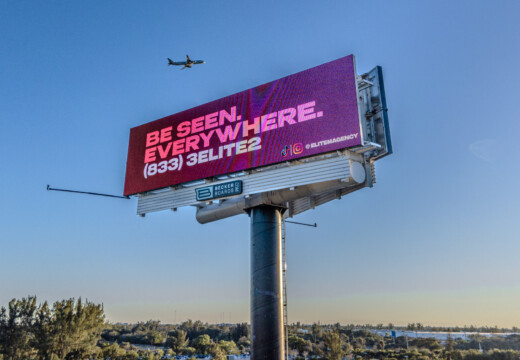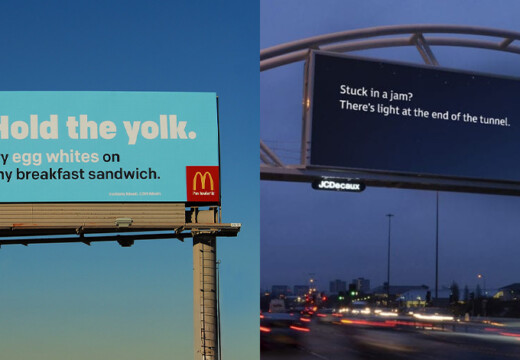Digital billboards are a powerful way to advertise, but creating effective graphics requires careful planning. Here’s what you need to know:
- Focus on readability: Use high-contrast colors (e.g., white on black) and simple, bold text that’s visible from far away.
- Stick to technical standards: Design at the exact dimensions required, use RGB color mode, and save files as JPG, PNG, or BMP.
- Keep it simple: Avoid clutter. Use one strong visual and leave enough empty space for better focus.
- Test your design: Preview at full scale to ensure clarity, readability, and balance.
- Analyze performance: Use analytics to refine your graphics and improve results over time.
How To Make Digital Billboard Design – Photoshop Cc Tutorial

Digital Billboard Graphics Standards
Creating effective billboard graphics requires sticking to specific technical guidelines to ensure they display correctly. Based on Blip‘s expertise, here are the key points you need to know about size, color, and file formats.
Size and Resolution Requirements
Always design your graphics at the exact dimensions of the final display. This prevents scaling issues like pixelation or blurriness. Keep in mind that different billboard formats may have their own size, aspect ratio, and resolution specifications. Also, optimize the file size to ensure quick loading and sharp visuals.
Color and Contrast Guidelines
Choose high-contrast color combinations for better readability. Examples include white text on dark backgrounds, yellow text on black, or black text on white. Avoid color pairings with low contrast, as they can make your message harder to read.
Supported File Types
Digital billboard systems typically support formats like JPG (or JPEG), PNG, and BMP. Use JPG for photo-heavy designs and PNG when transparency is required. Make sure your files are prepared in RGB color mode, using standard profiles like sRGB, to maintain consistent colors across displays.
Before diving into motion graphics, test your static designs to fine-tune your message and ensure clarity.
Creating High-Impact Graphics
Eye-Catching Images
Digital billboards get a lot of visibility, so it’s crucial to pick images that are simple yet powerful. The goal? Make sure anyone passing by can understand your message instantly. Keep it clear and to the point.
Keeping the Design Clean
With the large space digital billboards offer, less is often more. Stick to one strong visual element to grab attention quickly. Avoid unnecessary details or clutter that might distract from your main message.
sbb-itb-2e2e93f
Making Graphics Easy to Read
Using Empty Space
Negative space, often called empty space, plays a crucial role in making billboards easy to understand. Think of it as a tool that guides the viewer’s attention to your main message. By adding blank areas around text and images, you can establish a clear visual order.
Here are some practical tips:
- Use wide margins to create separation.
- Add enough spacing between text and images.
- Remove unnecessary elements to avoid clutter.
Testing and Improving Graphics
Testing ensures your billboard design works effectively under real-world conditions by building on established technical standards.
Scale Preview Tools
Viewing your design at full scale is a must to ensure it grabs attention. Digital preview tools can simulate how your graphics will look from different distances. For example, Blip’s design guidelines tool lets you see your artwork at scale, making it easier to spot potential visibility issues early on.
Here’s what to check:
- Text readability from 500+ feet
- Image clarity at various distances
- Color contrast in different lighting
- Overall composition and balance
Design Comparison Tests
After confirming scale and clarity, test multiple design variations to fine-tune your message. Standing out often comes down to small but strategic adjustments.
Try this approach:
- Test different layouts, colors, and messaging by focusing on one change at a time.
- Keep track of changes and their results for future reference.
- Evaluate how viewers respond to each variation.
Performance Analysis
Once you’ve tested your designs, use analytics to measure how well they perform. As Kimberly Pinkson, Owner of Pretty In Pinkston, explains:
"Blip works for us. It’s a different medium, and it brings a lot of exposure. It sets us apart from the rest of the [competition], and that’s what I like."
Focus on these metrics:
- Engagement rates
- Campaign performance data
- Time-of-day performance
- Location-specific results
Ray Bowens, Founder of Hashtag-Vape, adds:
"Billboards are one of the most impactful ways to advertise, and with Blip, you spend a fraction of what you would end up paying elsewhere."
Use this data to refine your design elements and maximize your billboard’s effectiveness.
Conclusion
Creating impactful digital billboard graphics requires a mix of precision and smart design choices. To make your campaign successful, focus on these three key areas:
- Technical Excellence: Use high-resolution graphics that remain sharp from any viewing distance and ensure strong color contrast for better visibility.
- Strategic Design: Keep text clear and readable, use white space effectively, and simplify your message to make it instantly understandable.
- Performance Optimization: Leverage analytics to refine your design and achieve better results.
By following these principles, you can boost visibility and achieve measurable results. As one advertiser shared:
"Working with Blip has given Mr. Charlie’s the momentum to get our new location on the map while accelerating growth for our original location"


